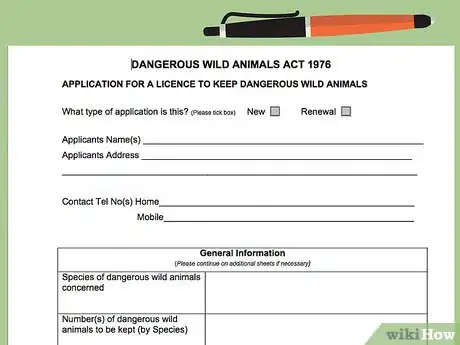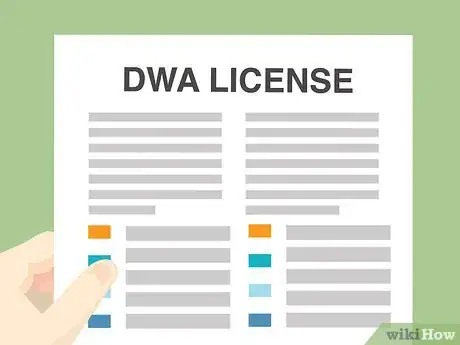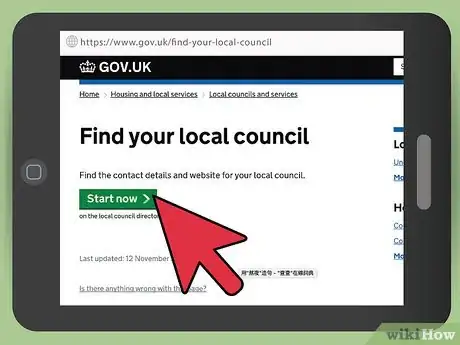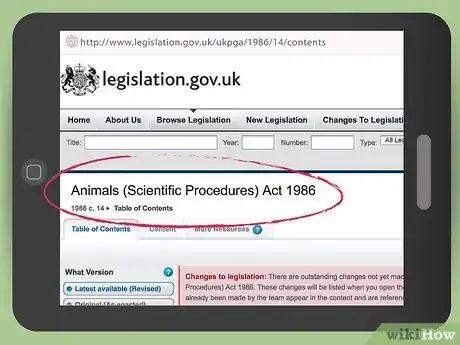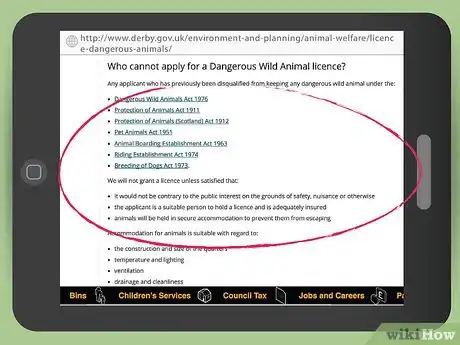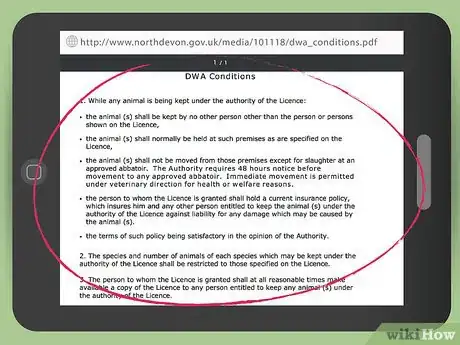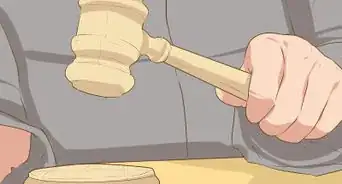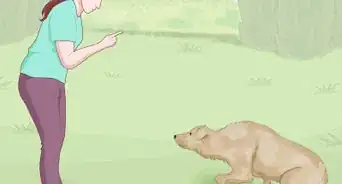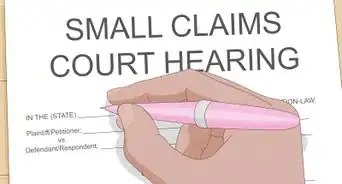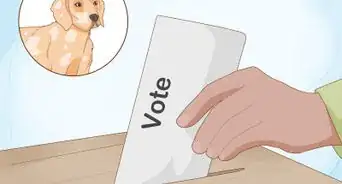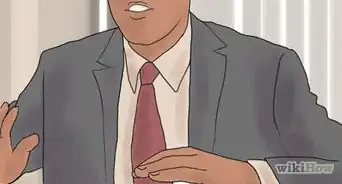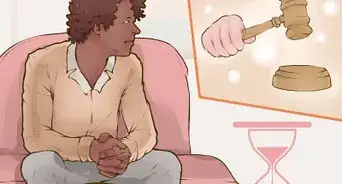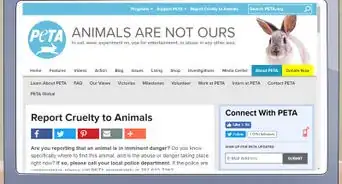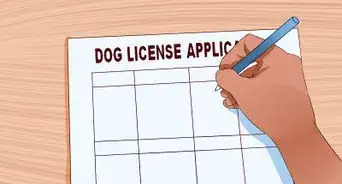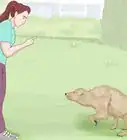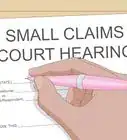This article was co-authored by wikiHow Staff. Our trained team of editors and researchers validate articles for accuracy and comprehensiveness. wikiHow's Content Management Team carefully monitors the work from our editorial staff to ensure that each article is backed by trusted research and meets our high quality standards.
There are 9 references cited in this article, which can be found at the bottom of the page.
This article has been viewed 62,460 times.
Learn more...
A Dangerous Wild Animals (DWA) licence allows you to keep animals considered dangerous or threatening to the general population in your home or on your property. A wide variety of exotic, wild, and dangerous animals are covered by the licence.[1] At this time, you can only obtain a DWA licence if you are a resident living in the United Kingdom (UK), and if you meet certain criteria as enforced by your local council. Once you’re certain of the ownership prerequisites, and go through the process of DWA approval, you’ll be ready to have the wild animal in your home.
Steps
Applying for the Licence
-
1Apply for the DWA licence with your local council. In most cases, you can visit your council's website and apply for the 2-year DWA licence online, or print a copy you can mail or fax to the council.
- Enter your name, contact information, and other pertinent applicant details.
- Provide contact information for any other people involved with keeping, feeding, or handling the animals.
- Submit the details about each animal within the DWA category on the application. Typically this will be the number of animals, the species, and where the animals will be held.[2]
-
2Pay for the veterinary inspection and licence. Your council may have specific inspection requirements before approval and payment take place. Not only may your premises be inspected, but the animal itself may need a final wellness check.[3]
- Typical payment is somewhere in the neighborhood of £200-£350.
- Renewal fees are often discounted. In some cases, they run roughly £100 less than the original application.[4]
- Some licences require either a Veterinary Surgeon or Secretary of State approval. The fees for services are discretionary, and may be a reason someone chooses one vet over another. Ask for an estimated cost before having anything done or receiving an invoice.[5]
Advertisement -
3Receive your DWA licence from the local council. After the local council has reviewed and processed your application, they will provide you with a DWA licence. It may take several weeks for you to receive your DWA licence depending on where you reside in the UK.
Determining if You Need a DWA
-
1Find your animal on The Dangerous Wild Animals Act 1976 (Modification) Order 2007. The 1976 Act is the authority on whether or not your animal requires a DWA. The list is extensive and covers a wide variety of marsupials, primates, carnivores, and elephants.[6]
- The modification made in 2007 added a few types of snakes, dingoes, and the Middle eastern thin-tailed scorpion to the dangerous animals list.
- Animals previously considered dangerous, but now reclassified, include, but are not limited to, a few smaller primates like squirrel monkeys, porcupines, various coatis, and hybridized cats.
-
2Consult with your local council regarding DWA licensing. [7] The rules, requirements, and regulations for obtaining and maintaining a DWA licence vary depending on where you reside in the UK. Your local council will provide information about the DWA licensing requirements in your area. They will provide you with the information such as:
- Details about the application process
- Licence conditions
- Associated laws and regulations
-
3Determine if you will own the animal commercially. If the animal is not for personal use, there is a chance the DWA is non-applicable. If you plan to use the animal for scientific purposes covered by the Animals (Scientific Procedures) Act 1986, or if the animal is to be used in any of the following capacities, the DWA is not required:[8]
- Displaying the animal in a zoo
- Training the animal to work in a circus
- Animals sold in a pet shop
Meeting Requirements to Apply for a Licence
-
1Verify that you meet the basic applicant criteria. Although the criteria will vary for each council, you must meet specific age requirements, typically 18 years old. Additionally, you must own insurance, have the ability to pay for various vet bills, and have the commitment to being the legal owner of all animals to be included on your licence.
-
2Ensure there are no other prohibiting factors. Based upon your location, there may be public interest grounds for disapproval. If owning the animal would be a nuisance or safety concern, or if you are deemed an unfitting owner, you may be denied. Similarly, if you have already been disqualified for any of the following Acts, a DWA licence will not be issued.
- Dangerous Wild Animals Act 1976
- Protection of Animals Act 1911
- Protection of Animals (Scotland) Act 1912
- Pet Animals Act 1951
- Animal Boarding Establishment Act 1963
- Riding Establishment Act 1974
- Breeding of Dogs Act 1973
-
3Determine whether you can properly maintain animals under the DWA category. At the time you request a DWA licence application, you will be asked to determine whether or not you can truly maintain these types of animals based on a series of considerations.
- Verify whether you will have the proper amount of space and facilities needed to house the animals, including exercise space and ability to accommodate adult-sized animals.
- Consider whether you can financially support your animals during their lifetime. You will need to pay for food expenses and possible veterinarian bills on a routine basis.
- Depending on the animals you plan on housing, you may need to practice certain disposal methods to meet standards enforced by your local environment agency.
- Ensure the ability to store any feed in a manner that will not attract, and is protected from, vermin of all kind.
Community Q&A
-
QuestionHow can I put details of the animals I will be keeping if I haven't bought them yet? I can't buy them until I have my license, but I can I apply and add animals at a later date?
 Community AnswerIn general, the applications only require a few items. The applicant details do not require anything about the animal. The information about the animal, however, typically only requires the number of animals, the species, the premises where the animal(s) will be held, and the names of others who will be handling the animal(s).
Community AnswerIn general, the applications only require a few items. The applicant details do not require anything about the animal. The information about the animal, however, typically only requires the number of animals, the species, the premises where the animal(s) will be held, and the names of others who will be handling the animal(s). -
QuestionDo I have to build a habitat for the animal? Or could it just stay in my house?
 Charlie LambCommunity AnswerYou need to make sure your enclosure will be suitable for that animal and completely sealed to ensure that it doesn't escape.
Charlie LambCommunity AnswerYou need to make sure your enclosure will be suitable for that animal and completely sealed to ensure that it doesn't escape. -
QuestionWhere can I buy a crocodilian?
 Charlie LambCommunity AnswerYou'll need to get this license and find a breeder. For the breeder, you might look online.
Charlie LambCommunity AnswerYou'll need to get this license and find a breeder. For the breeder, you might look online.
Warnings
- Seized animals may be disposed of, and the owner is liable for all costs related to seizure and disposal.⧼thumbs_response⧽
- Animals being kept without licence, or in unsatisfactory conditions, can be seized from an owner.⧼thumbs_response⧽
References
- ↑ https://www.gov.uk/licence-wild-animal
- ↑ http://www.northdevon.gov.uk/media/72264/gdw1_dangerous_animals-21.pdf
- ↑ http://www.northdevon.gov.uk/business/licences-and-permits/animal-licences/dangerous-wild-animals-licences/
- ↑ https://www.havering.gov.uk/Pages/Services/Licences-dangerous-animals.aspx
- ↑ http://www.rcvs.org.uk/advice-and-guidance/code-of-professional-conduct-for-veterinary-surgeons/pdf/
- ↑ http://www.legislation.gov.uk/uksi/2007/1437/pdfs/uksi_20071437_en.pdf
- ↑ https://www.gov.uk/find-your-local-council
- ↑ http://www.legislation.gov.uk/ukpga/1986/14/contents
- ↑ http://www.northdevon.gov.uk/media/101118/dwa_conditions.pdf
